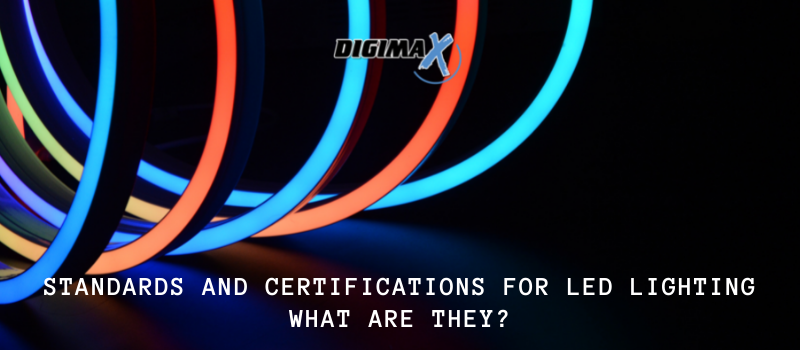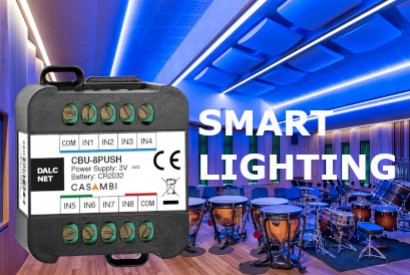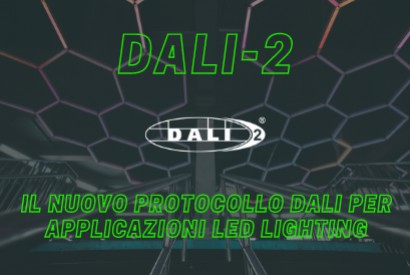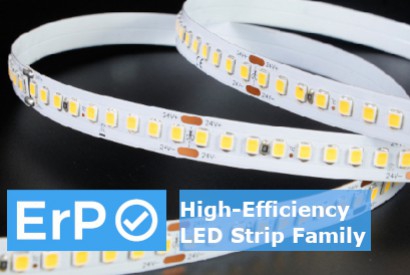Ecodesign Directive: what's new for the LED Strip market - Digimax
Published : 05/31/2022 09:30:00
In recent years, the European LED lighting market has expressed a growing need for efficient and sustainable lighting systems, with the aim of optimising energy consumption and offering transparent information to consumers.
Since last year, decisive news for the lighting sector has come into force: the EcoDesign Directive relating to the EU Regulation 2019/2020 provides for a number of changes to the way in which CE certification for lighting devices, including LED strips, is carried out. More precisely, the EcoDesign regulation is divided into two regulations, the Single Lighting Regulation (or SLR) and the Energy Label Regulation (or ELR), which came into force on 1 September 2021 - the date on which the import and export of standardised products became official.
The aim of the Ecodesign directive is to effectively regulate the energy efficiency performance of LED devices, in order to guarantee the highest quality of products in terms of operation and sustainability. But what are the specifications of the Ecodesign regulation, what are the modalities and timeframes for compliance and what will the LED lighting market offer from now on?
What is the Ecodesign regulation for LED lighting?
The European Ecodesign directive comprises a series of technical and commercial parameters that regulate the entire LED lighting sector and is applied by definition to all light sources capable of emitting light. The expected result of the Ecodesign regulation is therefore to improve the offer in the LED lighting market by ensuring certified high-performance products with a higher lifetime and lower energy consumption.
Older, less performing devices can no longer be marketed and will have to be replaced. However, there are some exceptions: the Ecodesign regulation will not apply to RGB lighting devices (only white and tunable white) and to some types of products including:
- LED chips;
- LED packages (electrical components containing at least one LED chip);
- Devices containing removable sources (light sources that can be removed from equipment and lamps: in this case the legislation will apply to the source only);
- Non-removable light sources (the opposite case, i.e. devices where the light source cannot be removed: the standard will be applied to the whole device).
Single Lighting Regulation and Energy Labeling Regulation
The Ecodesign Directive for LED lighting is divided into the two standards SLR and ELR. These regulations redefine the technical aspects related to the efficiency and consumption of LED devices, as well as the commercial aspects concerning energy labelling, with new certification standards valid only for the most efficient, sustainable and high-performance products.
1. Single Lighting Regulation: the SLR standard calculates the energy efficiency of LED luminaires through a mathematical formula, where the light output of the source must not exceed the maximum power, calculated on the basis of the declared luminous flux. For conventional LED strips, the calculation is made on 0.5m of product with a minimum efficiency basis of 120 lm/W.
2. Energy Labeling Regulation: the ELR Directive outlines the essential criteria of the energy label starting with the efficiency level in a table from A to G, the name of the supplier, the model, a QR code with product info, the consumption in kWh and the regulation number. In the case of standard LED strips, the energy efficiency is indicatively between C and F.
How and when to comply with the Ecodesign Directive
Given the European Union's decisions to reduce energy consumption by 55% by 2030 and to zero environmental impact by 2050, the Ecodesign regulation is a major challenge for industrial sectors, including LED lighting.
From its entry into force on 1 September 2021, the Ecodesign Directive provides for a transition period until 1 March 2023, the date indicated by the EPREL database (EU Product Database for Energy Labelling) from which only Ecodesign-compliant products will be saleable.
Non-compliant LED luminaires will be withdrawn from the market to make way for new generation Ecodesign and CE certified products.
ASK FOR MORE INFO ABOUT ECODESIGN
Ecodesign certified Digimax solutions for LED Lighting
Linear LED lighting is one of the sectors for which Digimax is most recognised and the proposal of professional LED strips is constantly being updated. In compliance with the Ecodesign directive, the LED strips proposed by Digimax will offer a colour rendering index (CRI) higher than 80 and 90, thus raising the quality of lighting devices with a range of innovative and more efficient products.
The Digimax range of Ecodesign certified and CE marked Colors LED strips consists of:
- LED Lighting consumer solutions: a wide range of 12 or 24 volt LED strips for indoor and outdoor use, with roll-to-roll technology to ensure continuity of the strip from 5 to 25 metres without the use of tin plating, with protective caps and IP ratings up to IP55;
- Professional LED Lighting solutions: for indoor applications we offer 12, 24 and 48 volt white LED strips, RGB, RGB-W and tunable white coloured LED strips, 230Vac high voltage LED strips; for outdoor solutions we offer 24 and 48 volt white and coloured LED strips with IP67 class, resistant to water and mechanical traction.
Finally, Digimax's range is completed by the innovative Neon Strip LEDs, which combine the dimensions of the LED tube with the advantages of LED strips. Available in white or coloured in side, top and 3D formats, with 360° light emission and the possibility of a continuous head/tail light effect, they are CE marked, IP65 certified and of course eco-designed.
-
Wireless interface for Casambi lighting systems with 8 push buttons
Leggi tutto
Published : 01/14/2021 10:30:00 -
DALI2: the new DALI protocol for LED lighting applications - Digimax
Leggi tutto
Published : 03/24/2022 17:00:00 -
High efficiency LED strips in line with European ErP regulation
Leggi tutto
Published : 02/16/2021 08:30:00




